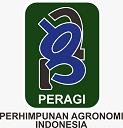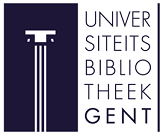Comparative Effects of Trichoderma and EM4 in Aerobic–Anaerobic Tiered-Bucket Production on Liquid Organic Fertilizer and Compost Quality
Abstract
Organic waste is an abundant resource but remains underutilized as a safe and nutrient-rich organic fertilizer. This study aims to evaluate the effectiveness of Trichoderma as an alternative bioactivator to EM4 in improving the quality of liquid organic fertilizer (LOF) and compost through tiered bucket systems under aerobic (A2) and anaerobic (A1) conditions. A randomized complete block design was used with five Trichoderma doses (0; 15; 20; 25; 30 mL.L⁻¹) and EM4 (30 mL.L⁻¹) as a comparison. The liquid and solid fractions were analyzed for C, N, C/N ratio, P₂O₅, K₂O, and heavy metals (Pb, Cd, Cu) using standard methods. The data were analyzed through ANOVA and orthogonal contrast tests. Results showed that the aerobic system consistently reduced the C/N ratio, producing more mature and stable products, while the anaerobic system tended to retain higher C-organic content. These differences were statistically significant as the aerobic condition (A2) decreased the C/N ratio by 4.74 or 40.93% in liquid organic fertilizer and by 3.62 or 19.52% in compost compared to the anaerobic condition (A1), while total P₂O₅ in liquid organic fertilizer increased by about 14.81% under A2. Medium–high doses of Trichoderma (25–30 mL L⁻¹) in the aerobic system yielded the best quality in terms of maturity, whereas EM4 generally resulted in higher macro-nutrient contents (N, P₂O₅, K₂O). All heavy metal levels were far below the SNI/Ministry of Agriculture thresholds, indicating product safety. Practically, the A2–T3/T4 combination is recommended to produce mature, stable, and safe organic fertilizer, while co-inoculation strategies may be pursued to enhance nutrient content. This study confirms that Trichoderma primarily accelerates humification and stabilizes organic matter, offering a practical, low-cost option for household/community organic waste management within a circular-economy framework; accordingly, the aerobic bucket system with medium–high Trichoderma doses (A2–T3/T4) is recommended to achieve mature, stable LOF–compost. However, the findings are lab-scale and substrate-specific.
Keywords
Full Text:
PDFReferences
Abdelghany, A. M., Farouk, A. S., Alwakel, E. S., Ebaid, M., Naser, M., Lamlom, S. F., & Shehab, A. A. (2025). Improving maize yield in newly reclaimed soils: effects of irrigation, mulching, and foliar treatments. BMC Plant Biology, 25(1), 1–23. https://doi.org/10.1186/s12870-025-06637-0
Aguilar-Paredes, A., Valdés, G., Araneda, N., Valdebenito, E., Hansen, F., & Nuti, M. (2023). Microbial community in the composting process and its positive impact on the soil biota in sustainable agriculture. Agronomy, 13(2), 1–24. https://doi.org/10.3390/agronomy13020542
Alias, C., Bulgari, D., & Gobbi, E. (2022). It works! Organic-waste-assisted trichoderma spp. Solid-state fermentation on agricultural digestate. Microorganisms, 10(1), 1–12. https://doi.org/10.3390/microorganisms10010164
Altaf, M., Ilyas, T., Shahid, M., Shafi, Z., Tyagi, A., & Ali, S. (2023). Trichoderma inoculation alleviates Cd and Pb-induced toxicity and improves growth and physiology of vigna radiata (l.). ACS Omega, 1(1), 8557−8573. https://doi.org/10.1021/acsomega.3c10470
Anggriyani, R., Alicia Farma, S., Biomed, M., Oktaviani, M., Yuliana, L., & Arya Fathiir, M. (2022). Pemanfaatan sampah organik domestik berbahan tumbuhan dan hewan untuk pembuatan kompos secara aerob. Prosiding Seminar Nasional Bio, 3(6), 527–537. https://semnas.biologi.fmipa.unp.ac.id/index.php/prosiding/article/view/478
Ayilara, M. S., Olanrewaju, O. S., Babalola, O. O., & Odeyemi, O. (2020). Waste management through composting: challenges and potentials. Sustainability (Switzerland), 12(11), 1–23. https://doi.org/10.3390/su12114456
Bohacz, J., & Kowalska, T. K. (2020). Modification of post-industrial lignin by fungal strains of the genus Trichoderma isolated from different composting stages. Journal of Environmental Management, 266(1), 1–11. https://doi.org/10.1016/j.jenvman.2020.110573
Boruszko, D. (2025). Application of effective microorganisms in the full-scale composting of dairy industry sewage sludge. Desalination and Water Treatment, 323(1), 1–9. https://doi.org/10.1016/j.dwt.2025.101389
BSN. (2004). SNI 19-7030-2004: Spesifikasi kompos dari sampah organik domestik (pp. 1–3). Badan Standardisasi Nasional.
BSN. (2024). SNI 7763:2024 – pupuk organik padat. in Badan Standardisasi Nasional (pp. 1–25). Badan Standardisasi Nasional.
Castillo, B. U., Morones-Ramírez, J. R., Rivera-De la Rosa, J., Alcalá-Rodríguez, M. M., Cerdán Pasarán, A. Q., Díaz-Barriga Castro, E., & Escárcega-González, C. E. (2022). Organic waste as reducing and capping agents for synthesis of silver nanoparticles with various applications. ChemistrySelect, 7(26), 1–12. https://doi.org/10.1002/slct.202201023
Chen, M., Li, Q., Liu, C., Meng, E., & Zhang, B. (2025). Microbial degradation of lignocellulose for sustainable biomass utilization and future research perspectives. Sustainability (Switzerland), 17(9), 1–22. https://doi.org/10.3390/su17094223
Demir, H., Saka, A. K., Uçan, U., Akgün, İ. H., & Yalçı, H. K. (2024). Impact of effective micro-organisms (EM) on the yield, growth and bio-chemical properties of lettuce when applied to soil and leaves. BMC Plant Biology, 24(1), 1–17. https://doi.org/10.1186/s12870-024-05980-y
Dutta, R., Kumar, S., Jayalakshmi, K., Radhakrishna, A., Bhagat, K., Manjunatha Gowda, D. C., Karuppaiah, V., Bhandari, H. R., Bomble, R., Gurav, V., Mahajan, V., & Singh, M. (2024). Potential of trichoderma strains to positively modulate plant growth processes and bulb yield in Rabi onion. Frontiers in Sustainable Food Systems, 8(1), 1–13. https://doi.org/10.3389/fsufs.2024.1427303
Elbasiouny, H., El-Ramady, H., Elbehiry, F., Rajput, V. D., Minkina, T., & Mandzhieva, S. (2022). Plant nutrition under climate change and soil carbon sequestration. Sustainability (Switzerland), 14(2), 1–20. https://doi.org/10.3390/su14020914
EPA. (2001). Method 200.7: Trace elements in water, solids, and biosolids by inductively coupled plasma–atomic emission spectrometry (Revision 5.0, EPA-821-R-01-010) (pp. 1–8). Environmental Protection Agency.
Feszterová, M., Kowalska, M., & Hudec, M. (2024). Assessing the impact of soil humic substances, textural fractions on the sorption of heavy metals (Cd, Pb). Applied Sciences (Switzerland), 14(7), 1–20. https://doi.org/10.3390/app14072806
Ganivet, E. (2020). Growth in human population and consumption both need to be addressed to reach an ecologically sustainable future. Environment, Development and Sustainability, 22(6), 4979–4998. https://doi.org/10.1007/s10668-019-00446-w
Guzmán, P. G., Etesami, H., & Santoyo, G. (2025). Trichoderma: a multifunctional agent in plant health and microbiome interactions. BMC Microbiology, 25(1), 1–17. https://doi.org/10.1186/s12866-025-04158-2
Hemati, A., Nazari, M., Asgari Lajayer, B., Smith, D. L., & Astatkie, T. (2022). Lignocellulosics in plant cell wall and their potential biological degradation. Folia Microbiologica, 67(5), 671–681. https://doi.org/10.1007/s12223-022-00974-5
Hidalgo, D., Corona, F., & Martín-Marroquín, J. M. (2022). Manure biostabilization by effective microorganisms as a way to improve its agronomic value. Biomass Conversion and Biorefinery, 12(10), 4649–4664. https://doi.org/10.1007/s13399-022-02428-x
Huang, R., Crowther, T. W., Sui, Y., Sun, B., & Liang, Y. (2021). High stability and metabolic capacity of bacterial community promote the rapid reduction of easily decomposing carbon in soil. Communications Biology, 4(1), 1–12. https://doi.org/10.1038/s42003-021-02907-3
Khan, M. T., Aleinikovienė, J., & Butkevičienė, L. M. (2024). Innovative organic fertilizers and cover crops: perspectives for sustainable agriculture in the era of climate change and organic agriculture. Agronomy, 14(12), 1–29. https://doi.org/10.3390/agronomy14122871
Krasilnikov, P., Taboada, M. A., & Amanullah. (2022). Fertilizer use, soil health and agricultural sustainability. Agriculture (Switzerland), 12(4), 16–20. https://doi.org/10.3390/agriculture12040462
Li, J., Wei, J., Shao, X., Yan, X., & Liu, K. (2023). Effective microorganisms input efficiently improves the vegetation and microbial community of degraded alpine grassland. Frontiers in Microbiology, 14(1), 1–13. https://doi.org/10.3389/fmicb.2023.1330149
Lima, P. C., Karimian, P., Johnston, E., & Hartley, C. J. (2024). The Use of Trichoderma spp. for the bioconversion of agro-industrial waste biomass via fermentation: a review. Fermentation, 10(9), 1–31. https://doi.org/10.3390/fermentation10090442
Liu, Q., Meng, X., Li, T., Raza, W., Liu, D., & Shen, Q. (2020). The growth promotion of peppers (Capsicum annuum L.) by trichoderma guizhouense NJAU4742-based biological organic fertilizer: Possible role of increasing nutrient availabilities. Microorganisms, 8(9), 1–23. https://doi.org/10.3390/microorganisms8091296
Maciag, T., Kozieł, E., Rusin, P., Otulak-Kozieł, K., Jafra, S., & Czajkowski, R. (2023). Microbial consortia for plant protection against diseases: more than the sum of its parts. International Journal of Molecular Sciences, 24(15), 1–20. https://doi.org/10.3390/ijms241512227
Mentan RI. (2019). Keputusan Menteri Pertanian Republik Indonesia Nomor 261/KPTS/SR.310/M/4/2019 Tentang Persyaratan Teknis Minimal Pupuk Organik, Pupuk Hayati, dan Pembenah Tanah (pp. 1–18). Menteri Pertanian RI. https://psp.pertanian.go.id/
Mridha, N., Ray, D. P., Singha, A., Das, A., Bhowmick, M., Ghosh, R. K., Manjunatha, B. S., Saha, B., Roy, A. N., Nayak, L., & Das, A. (2023). Composting of natural fibre wastes for preparation of organic manures and bio-enhancers. Economic Affairs (New Delhi), 68(2), 1121–1128. https://doi.org/10.46852/0424-2513.2.2023.18
Munir, N., Jahangeer, M., Bouyahya, A., Omari, N. El, Ghchime, R., Balahbib, A., Aboulaghras, S., Mahmood, Z., Akram, M., Shah, S. M. A., Mikolaychik, I. N., Derkho, M., Rebezov, M., Venkidasamy, B., Thiruvengadam, M., & Shariati, M. A. (2022). Heavy metal contamination of natural foods is a serious health issue: A review. Sustainability (Switzerland), 14(1), 1–20. https://doi.org/10.3390/su14010161
Organo, N. D., Granada, S. M. J. M., Pineda, H. G. S., Sandro, J. M., Nguyen, V. H., & Gummert, M. (2022). Assessing the potential of a Trichoderma-based compost activator to hasten the decomposition of incorporated rice straw. Scientific Reports, 12(1), 1–12. https://doi.org/10.1038/s41598-021-03828-1
Poveda, J., Abril-Urias, P., & Escobar, C. (2020). Biological Control of plant-parasitic nematodes by filamentous fungi inducers of resistance: trichoderma, mycorrhizal and endophytic fungi. Frontiers in Microbiology, 11(1), 1–14. https://doi.org/10.3389/fmicb.2020.00992
Ramady, H. El, Brevik, E. C., Bayoumi, Y., Shalaby, T. A., El-Mahrouk, M. E., Taha, N., Elbasiouny, H., Elbehiry, F., Amer, M., Abdalla, N., Prokisch, J., Solberg, S., & Ling, W. (2022). An overview of agro-waste management in light of the water-energy-waste nexus. Sustainability (Switzerland), 14(23), 1–30. https://doi.org/10.3390/su142315717
Ren, F., Wu, F., Gao, L., Jie, Y., & Wu, X. (2025). Proteomic and mechanistic insights into the efficiency of atmospheric and room-temperature plasma mutagenesis-driven bioconversion of corn stover by trichoderma longibrachiatum. Fermentation, 11(4), 1–28. https://doi.org/10.3390/fermentation11040181
Romaniuk, W., Mazur, K., Borek, K., Borusiewicz, A., Wardal, W. J., Tabor, S., & Kuboń, M. (2021). Biomass energy technologies from innovative dairy farming systems. Processes, 9(2), 1–19. https://doi.org/10.3390/pr9020335
Sahu, A., Manna, M. C., Bhattacharjya, S., Rahman, M. M., Mandal, A., Thakur, J. K., Sahu, K., Bhargav, V. K., Singh, U. B., Sahu, K. P., & Patra, A. K. (2020). Dynamics of maturity and stability indices during decomposition of biodegradable city waste using rapo-compost technology. Applied Soil Ecology, 155(2), 1–8. https://doi.org/10.1016/j.apsoil.2020.103670
Sani, M. N. H., Hasan, M., Uddain, J., & Subramaniam, S. (2020). Impact of application of Trichoderma and biochar on growth, productivity and nutritional quality of tomato under reduced N-P-K fertilization. Annals of Agricultural Sciences, 65(1), 107–115. https://doi.org/10.1016/j.aoas.2020.06.003
Sarah, M., Misran, E., Maulina, S., & Madinah, I. (2023). Optimization of fermentation conditions to produce liquid organic fertilizer (LOF) from rotten vegetable waste using response surface methodology. Cleaner Engineering and Technology, 16(1), 1–10. https://doi.org/10.1016/j.clet.2023.100679
Sun, L., Guan, W., Tai, X., Qi, W., Zhang, Y., Ma, Y., Sun, X., Lu, Y., & Lin, D. (2025). Research progress on microbial nitrogen conservation technology and mechanism of microorganisms in aerobic composting. Microbial Ecology, 88(1), 1–14. https://doi.org/10.1007/s00248-025-02513-4
Syarifinnur, S., Nuraini, Y., Prasetya, B., & Handayanto, E. (2023). Comparing compost and vermicompost produced from market organic waste. International Journal of Recycling of Organic Waste in Agriculture, 12(3), 279–289. https://doi.org/10.30486/ijrowa.2022.1944251.1368
Tyśkiewicz, R., Nowak, A., Ozimek, E., & Jaroszuk-ściseł, J. (2022). Trichoderma : estado actual de su aplicación en la agricultura para el biocontrol de hongos fitopatógenos y la estimulación del crecimiento vegetal. Revista Internacional de Ciencias Moleculares, 23(4), 1–28. https://www.mdpi.com/1422-0067/23/4/2329
Valenzuela, N. L., Hernández-Nataren, E., Chávez-Cerón, L., Granados-Echegoyen, C. A., Alonso-Hernández, N., Mayek-Pérez, N., Lara-Viveros, F. M., Ponce-Lira, B., & Calderón-Cortés, N. (2024). Influence of trichoderma species on the reduction of heavy metal levels in bean plants irrigated with wastewater: a case study from the Mezquital Valley, Hidalgo, Mexico. Renewable Agriculture and Food Systems, 39. https://doi.org/10.1017/S1742170524000231
Waheed, S., & Zeng, L. (2020). The critical role of miRNAs in regulation of flowering time and flower development. Genes, 11(3), 1–24. https://doi.org/10.3390/genes11030319
Wang, M., Song, G., Zheng, Z., Mi, X., & Song, Z. (2024). Exploring the impact of fulvic acid and humic acid on heavy metal availability to alfalfa in molybdenum contaminated soil. Scientific Reports, 14(1), 1–11. https://doi.org/10.1038/s41598-024-83813-6
Yang, H., Zhang, H., Qiu, H., Anning, D. K., Li, M., Wang, Y., & Zhang, C. (2021). Effects of C/N ratio on lignocellulose degradation and enzyme activities in aerobic composting. Horticulturae, 7(11), 1–13. https://doi.org/10.3390/horticulturae7110482
Yap, C. K., & Al-Mutairi, K. A. (2023). Effective microorganisms as halal-based sources for biofertilizer production and some socio-economic insights: A Review. Foods, 12(8), 1–25. https://doi.org/10.3390/foods12081702
Zhang, K., Khan, Z., Yu, Q., Qu, Z., Liu, J., Luo, T., Zhu, K., Bi, J., Hu, L., & Luo, L. (2022). Biochar coating is a sustainable and economical approach to promote seed coating technology, seed germination, plant performance, and soil health. Plants, 11(21), 1–23. https://doi.org/10.3390/plants11212864
Zhao, L., Huang, Y., Ran, X., Xu, Y., Chen, Y., Wu, C., & Tang, J. (2025). Nitrogen transformation mechanisms and compost quality assessment in sustainable mesophilic aerobic composting of agricultural waste. Sustainability (Switzerland), 17(2), 1–19. https://doi.org/10.3390/su17020575
Zhu, L., Chen, Y., Ni, W., Zeng, J., Li, X., Hu, C., & Li, L. (2024). The degradation of polyethylene by trichoderma and its impact on soil organic carbon. Agriculture (Switzerland), 14(10), 1–15. https://doi.org/10.3390/agriculture14101821
Refbacks
- There are currently no refbacks.


























